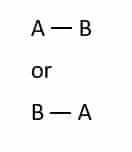Confusing Rules
If you’ve taken any test from the last couple of years, you may have stumbled upon strangely-worded or confusing rules. For example:
Train A can arrive earlier than train B if and only if train B arrives earlier than train C.
Either car A arrives immediately before car B, or it arrives immediately after car C, but not both.
The Q meal is served at some time after either the M meal or the N meal, but not after both.
It’s worth noting that none of these rules are ambiguous, i.e. none of it is open to multiple interpretations. That would compromise the logical validity and reliability of the exam, which is not something test-makers ever want to do. Indeed, each of these rules entails a concrete and definitive outcome. It’s just that this outcome is not as easy to deduce as it is with more straightforward rules.
Cleaning Up the Clutter
Let’s analyze the first rule:
Train A can arrive earlier than train B if and only if train B arrives earlier than train C.
This is clearly a conditional statement, which many test-takers would diagram as follows:
By the contrapositive, train C can arrive earlier than train B if and only if train B can arrive earlier than train A (assuming none of the trains can arrive simultaneously):
These two diagrams show that you possess the conditional reasoning skills necessary to ace the test. Unfortunately, this is not enough to ace it: ironically, knowledge of conditional reasoning is a necessary, but not a sufficient, condition to do well. What you need to do is analyze each part of this bi-conditional relationship more closely:
Let’s take trains A and B. Assuming neither of them can arrive simultaneously, there are only two possible sequences for A and B:
Our conditional rule specifies exactly what each of these two sequences mean: in the first one, train B must arrive before train C; in the second one, the opposite is true. Thus, we can create two separate, exhaustive, and mutually exclusive sequencing rules, one of which will always govern the order in which the three trains arrive:
Simplification Achieved
This is a much simpler representation of the original rule: it’s easier to understand, and even easier to apply to the questions in the game. It also shows you an important inference that you may not have seen otherwise: the B train can never arrive first or last.
When faced with trickier rules, the goal is to simplify them without deviating from their original meaning. Avoid parroting (or restating) the rule written on the page: try to analyze what it means, visually as well as spatially. And if it still seems convoluted, remember: there is usually a simpler way to draw it out.






Leave a Reply